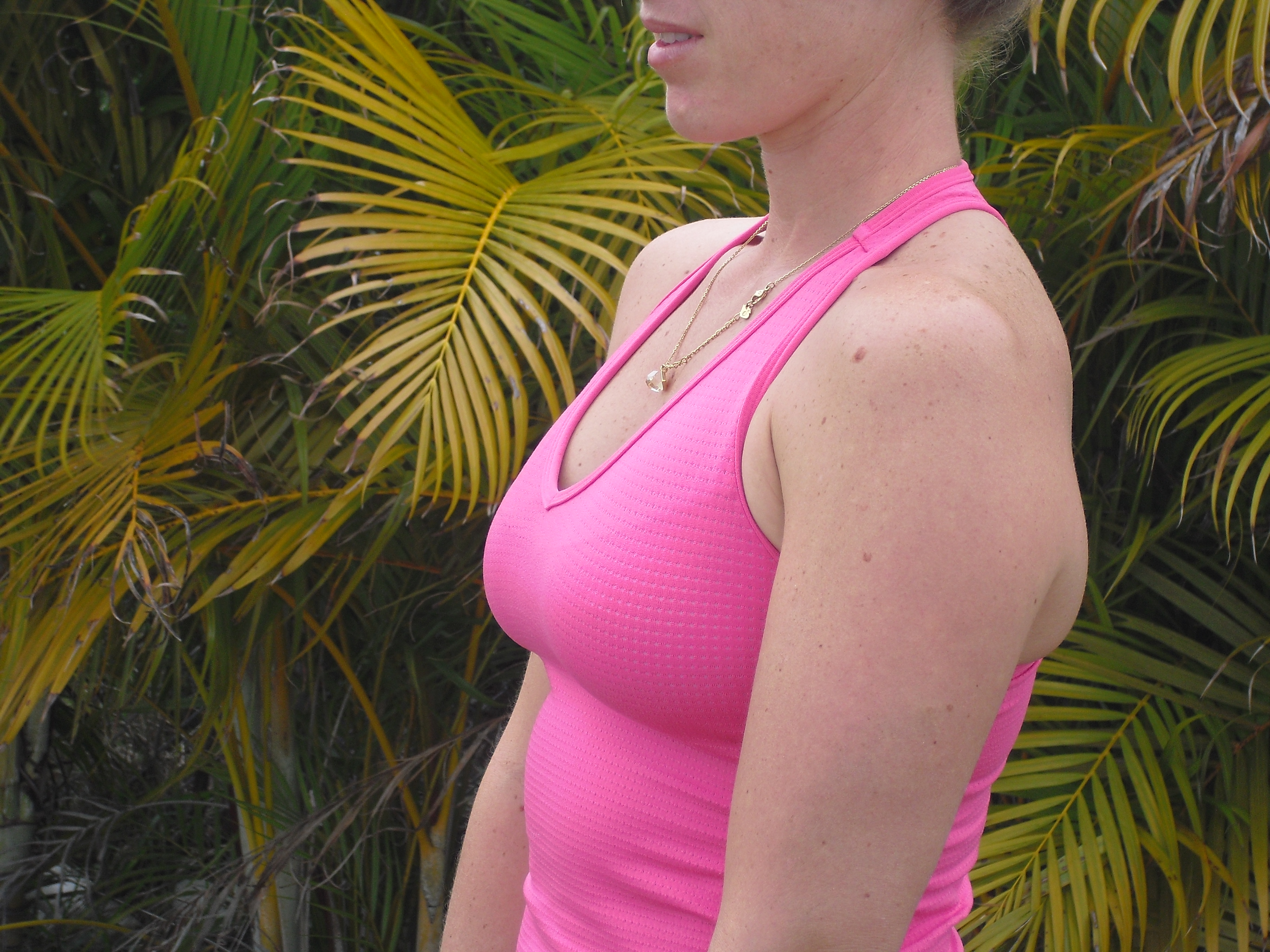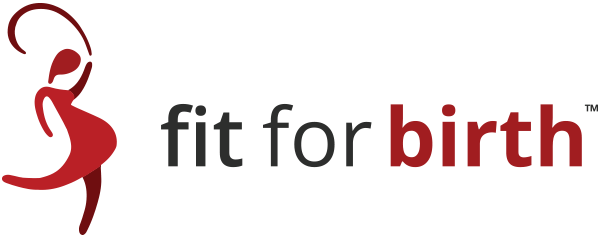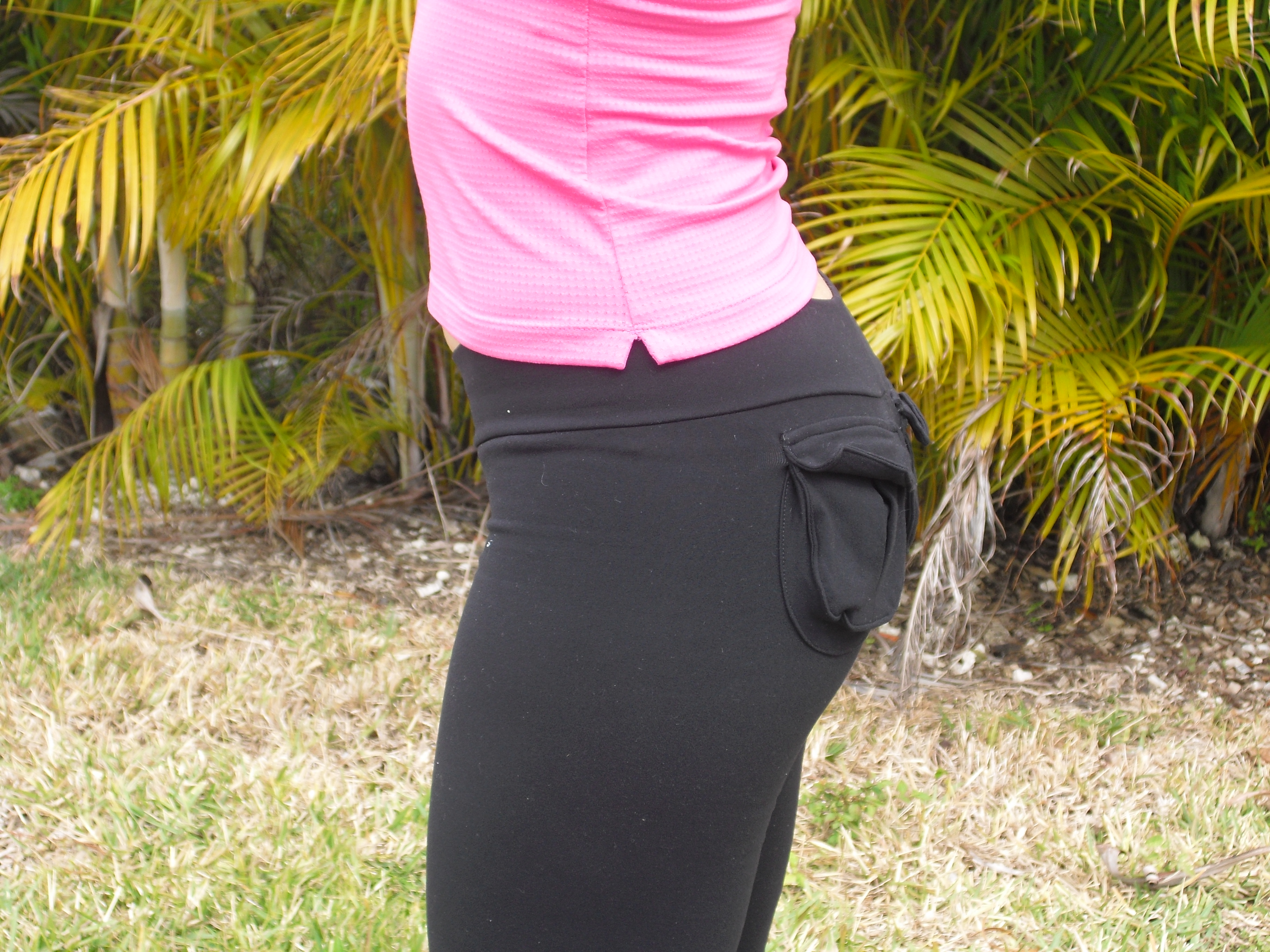Maintaining proper alignment can reduce a tremendous amount of pregnancy discomfort. Here are several common pregnancy misalignments, muscle imbalances, and postural syndromes: low back ache, neck ache, “big belly” discomfort, calf cramps, and breathlessness. Though still widely regarded as untreatable maladies, the realm of corrective exercise has been helping pregnant women mediate their discomforts effectively for several decades now.
The rapidly changing pregnant body can manifest almost any ache or pain, which can make it unfair to simply call them “pregnancy” related, as muscle physiological changes during this time tend to exacerbate existing muscular imbalances. In effect, pregnancy is like a crystal ball showing glimpses of the kinds of aches and pains future mom is likely to suffer years down the road. Fixing the alignment now will save mom from physical stress down the road.
As the belly grows, biomechanics of the body change. A common scenario is that as the weight around the belly increases, the belly hangs forward and the lower back is pulled into an increased lordotic curve. As the lumbar lordosis increases, it then becomes more likely that the shoulders will then round forward and the knees will knock inward. As the shoulders round and the knees cave, the head and neck are pulled further forward and the arches of the feet collapse. The entire chain is affected. Besides overall joint and ligament strain, including neck and back pain, a pregnant woman can suffer other discomforts, like sore feet or migraine headaches. All this can occur from straining muscles.
Since every pregnant woman is unique, the above example of imbalances can be thought of as common, but certainly not exact. This makes “postural alignment” exercises specifically difficult to recommend. What helps one woman’s muscle balance can quite commonly worsen another’s. If you are concerned with your postural alignment, please seek a qualified Corrective Exercise Specialist for consultation. In the world of personal training, words like “core”, “function”, and “alignment” are used by many but understood by few. Fit For Birth recommends C.H.E.K. certified trainers (chekinstitute.com), and of course our own Fit For Birth qualified Pre & Post Natal Corrective Exercise Specialists (GetFitForBirth.com).
Here is a quick reference chart of how to fix, or at least mediate a few common complaints. Each quick fix solution is described in detail after.
| Pregnancy Complaint | Quick Fix Solution |
| Low Back Ache | Pelvic Tilt, Diaphragmatic Breathing, Belly Pump |
| Neck Ache | Scapular Retraction, Head Placement |
| “Big Belly” Discomfort | Belly Pump |
| Calf Cramps | Calf Stretching, Stop Wearing Heels! |
| Breathlessness | Deep Diaphragmatic Breathing |
In order to apply these corrections, it is necessary to understand the following basics concerning neutral alignment, pelvic tilting, belly pumping, scapular retraction, calf stretching, and head placement.
“Neutral Alignment” is the position of least stress for the body. It is the place where all movement should start and end, where each joint in the body should naturally return when not in use. When the body does not return to neutral alignment naturally or easily, it will slowly accumulate more aches and pains. As pregnancy is a time of rapid change, it is often associated with aches and pains of misalignment.
Pelvic Tilting
Simply tilting one’s pelvis differently can correct hip and back alignment and directly help to alleviate back pains, as well as knee pains.
Stand up and place your hands on your hips. Imagine that your hands are holding a bowl of water (your pelvis). Now tuck your “tail” under like a dog, as if you are pouring water out the back of your “pelvis bowl.” Next, move your hips opposite, as if you are pouring water out the front of your “pelvis bowl.” Continue for ten repetitions in each direction. (Figure 1)
Figure 1: The photo on the left shows a posterior tilt—pouring water out the back of the “pelvis bowl.” The right shows more of an anterior tilt—pouring water out of the front of the “pelvis bowl.” Which alignment is right for you?
Now determine which direction is more difficult and simply repeat that direction more often, longer and with more intensity. Instead of tilting fully in both directions, you will tilt completely into the direction that is difficult and then return to neutral alignment, not continuing all the way into the other direction. This alone can often be enough to significantly reduce lower back pain.
Deep Diaphragmatic Breathing
Lie down and place your hands onto your lower belly. As you take a deep breath in through the nose, let your belly rise. As you let air out, let your belly fall. Practice while lying down until you can repeat the same belly filling inhalation when standing (figure 2 video).
Figure 2 (video) shows a pregnant belly expanding with inhalation.Even as the baby grows inside the uterus, the diaphragm muscle should be strong enough to continue deep breathing. Breathlessness is a sign of a weak diaphragm muscle. More complex is the underlying relationship that the diaphragm has to the core, and therefore back pain. Without a strong diaphragm, a pregnant woman will not have a functional core, which unknowingly implicates this weakness as the foundational component to everything from neck aches to calf cramps. The diaphragm muscle can be strengthened just like any other muscle, through correct activation and daily practice.
Belly Pump
Once the pregnant woman has proper ability to deep diaphragmatic breathing, she can begin belly pumping as a method for charging the core muscles. Essentially, belly pumping is a breath-centered core contraction. Lying down, place your hands on your belly and take a deep diaphragmatic breath (filling the belly during inhalation). Then, instead of just letting the air out and allowing the belly to shrink, be a bit more engaging with the exhale. Imagine trying to blow a candle out with an exhalation through your nose. This should engage the very deep transverse abdominis muscle (largely considered “the” core muscle).
Once mastering this technique lying down, try it standing up, and then periodically throughout the day. “Charging” the core in this manner can wake up the abdominal muscles, redirecting neural drive away from the back musculature that is so often on the verge of spasm as pregnancy postures change.
Figure 3 shows a pregnant belly pump.Quite amazingly in Fit For Birth’s experience has been the witnessing of “big belly syndrome” literally disappearing once a pregnant woman learns how to belly pump effectively. Take a look at Figure 4 below. The left shows Gabriela during her second pregnancy at 6 months before she has been taught to use her belly pump. This was taken before training with Fit For Birth. The photo on the right shows Gabriela during her third pregnancy at nearly nine months, but with a smaller tummy! She spent her third pregnancy learning how to use her belly pump effectively.


Figure 4 shows the usual big belly at 6 months (left), but then a much more manageable belly at nearly full term when strengthening the core through belly training (right).
Scapular Retraction
Scapular retraction corrects shoulder misalignment and directly helps to alleviate shoulder and neck tension.
Simply pull your shoulder blades together and hold. Then, allow your shoulders to move slightly forward and pull them back again. Make sure you use the muscles between your shoulder blades to perform this movement, and not the muscles of your neck and upper trapezius or “shoulder” areas. (Figure 5a)


Figure 5a: The photo on the left shows a relatively neutral scapular alignment. On the right, she pulls her shoulder blades together.
Do your best to avoid falling into the muscle imbalance shown in figure 5b, where the shoulders roll forward.

Figure 5b: This photo shows a typical pregnancy muscle imbalance called “shoulder pronation.” Generally one should avoid this posture, so as to avoid unnecessary strain throughout the pregnant body.
Shoulder openers
The video above is an exercise to help open the shoulder.
Calf Stretching
Calf stretching corrects ankle alignment and directly helps to alleviate flat-feet, plantar fascitis, shin splints, and calf cramps.
If you wear high heels, it’s likely you need calf stretching to correct postural imbalances at the ankle. Simply stand on a step and let your body weight sit into your heels. Make sure your knees do not hyperextend (into a super straight lock), but keep them just slightly bent. Generally keep your knees in line with your toes (often by rotating your knees slightly outward compared to your toes), since the knees are most likely to roll inward excessively during this stretch. You can also do one leg at a time.
 Figure 6a: A two-legged calf stretch: Find any place (like a step) where you can let your heels sink comfortably below your toes. Please hold on and relax while stretching. A special rule is to keep your knees in line with your toes, which usually means slightly rotating your knees outward (or just preventing them from falling inward too much).
Figure 6a: A two-legged calf stretch: Find any place (like a step) where you can let your heels sink comfortably below your toes. Please hold on and relax while stretching. A special rule is to keep your knees in line with your toes, which usually means slightly rotating your knees outward (or just preventing them from falling inward too much).


Figure 6b: The one-legged calf stretch gives a more intense stretch: Find any place (like a step) where you can let your heel sink comfortably below your toes. Please hold on and relax while stretching, and stretch both sides. A special rule is to keep your knee in line with your toe, while stretching each leg.
Calf stretching can also help reduce swelling at the ankles or feet, especially when the pregnant woman is aware to generally avoid standing still or sitting on a chair for long periods. Sitting on the floor is far less likely to cause swelling, as is putting the feet up or generally raising the feet above the hips.
Head Placement
Proper head placement corrects neck and head alignment and directly helps to alleviate neck tension and tension headaches.
Stand with your back against the wall, keeping your hips, shoulders, and head against the wall. Keeping your head on the wall, tuck your chin into your neck and hold. Hold for about 60 seconds or perform repetitions of Chin Tucking by subtly increasing the intensity of your chin into your neck and then releasing pressure a bit. Your objective is to teach your head to remain above your shoulders, not stuck out in front.(Figure 7)

 Figure 7a: Chin Tucking is like creating a “double chin” and then relaxing a bit. In the photo above, neutral alignment (left) is followed by a chin tuck (right).
Figure 7a: Chin Tucking is like creating a “double chin” and then relaxing a bit. In the photo above, neutral alignment (left) is followed by a chin tuck (right).
 Figure 7b: This photo shows a typical pregnancy muscle imbalance called “forward head posture.” Most women should avoid this posture, so as to avoid unnecessary strain throughout their pregnant bodies, especially in the neck and upper back.
Figure 7b: This photo shows a typical pregnancy muscle imbalance called “forward head posture.” Most women should avoid this posture, so as to avoid unnecessary strain throughout their pregnant bodies, especially in the neck and upper back.
More Serious Discomforts of Pregnancy
Some pregnant women experience more significant discomforts along with pregnancy. Three of these are sciatica, round ligament pain, and symphasis pubis dysfunction (SPD). The most appropriate suggestion in these cases is to seek the guidance of a qualified therapist. The second suggestion, however, is to understand how they fit in the world of muscle balance. All three syndromes will be worsened by poor alignment and improved by proper muscle balance and posture.
Sciatica is a syndrome that where the sciatic nerve that runs through the hip joint has extraordinary pressure upon it, causing intense hip/back/leg pain, and the classic nerve shooting pains down the leg. This can occur from general inflammation within the hip socket or when small hip rotator muscles flare up in attempts to compensate for pregnancy alignment changes. In both cases, muscle imbalance is the most notable culprit. Though beyond the scope of this article, finding your neutral alignment will help the struggling hip rotator muscles relax while the global hip complex re-establishes an appropriate role.
Round Ligament pain is a particularly pregnancy related issue because it is the only pain that occurs only in pregnant women. The round ligaments hold the uterus in place. As the uterus becomes heavier and the belly begins to hang outside of the abdominal cavity, the round ligaments are placed under significant stretch, and sometimes pain. Since these are ligaments, not muscles, they cannot be strengthened, and the accompanying pains are often considered untreatable. However, increasing core awareness will reveal that a strong core, diaphragm, and especially transverse abdominis can dramatically mediate round ligament pain. If it happens to you, consciously apply diaphragmatic breathing and belly pumping as you sit up, roll over, or generally move. Preventing “big belly syndrome” will prevent the round ligaments from stretching beyond their capacity.
Symphasis Pubis Dysfunction (SPD) and Sacro-Iliac Dysfunction (SID) are commonly associated with pregnancy. Both are misalignments of the pelvic bones, pubis and sacrum respectively, and occur in some regularity as the pregnancy hormone relaxin makes everything, well…relax. As skeletal misalignments, the imbalances of the muscles holding (or not holding) the bones in place come to immediate attention. If muscles are imbalanced in the pregnant hip, and the pregnant women bends to tie her shoe, squats to sit down or get up from the toilet, or performs any other of an infinite number of the activities of daily life, uneven torques will be applied to the hips. This will happen over and over again, until a bone is literally moved out of place. Call it misalignment, call it muscle imbalance, call it postural imbalance, it is all the same. Though exacerbated by pregnancy and the relaxin hormone, it is the imbalance that allows SPD or SID to manifest in one pregnancy while another escapes it (aside from an acute physical trauma). Though again beyond the scope of this article, finding muscle balance is at the heart of treating these pelvic misalignments.


